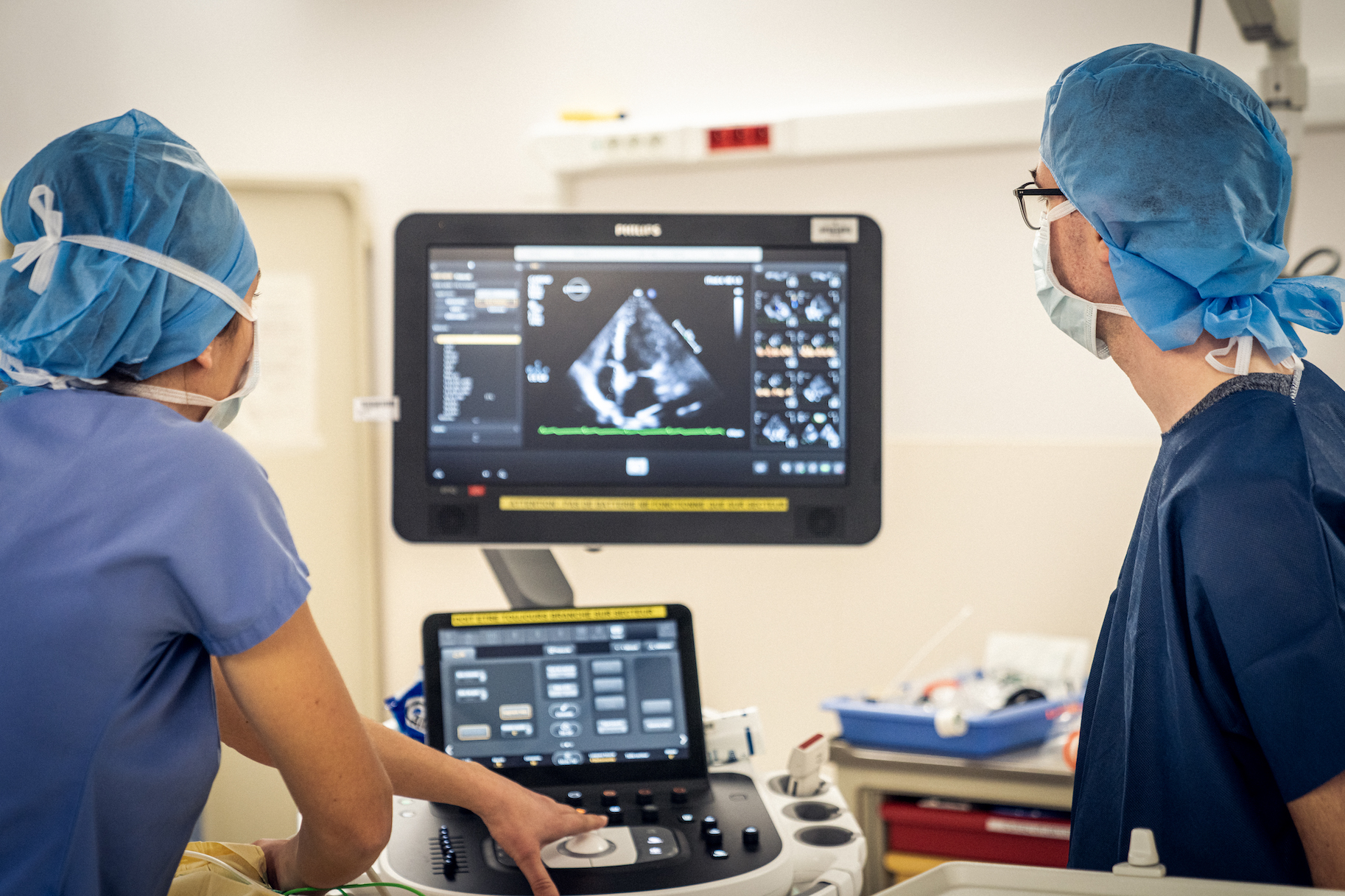
Anaesthesia is a vital hospital specialty, and one in which an enormous amount of progress has been made over the past twenty years. As a result, deaths in operating theatres have reached remarkably low levels.
But despite the reduced risks of anaesthesia during surgery, patients remain vulnerable to complications caused by instability in the cardiovascular system. One of these is low blood pressure, which affects close to 70% of patients during anaesthesia. The impact of this varies, but the most severe cases can lead to patients suffering from heart, brain or kidney problems.
“We have eliminated the biggest mistakes that could happen in theatres. Issues with treatment now have repercussions for the post-surgery phase”, explains François Kimmig, the man behind AnaestAssist.
Ad hoc information providing an incomplete overview of a patient’s status
But why is it so hard to prevent what can be serious side effects from anaesthesia during surgery?
In the operating theatre, anaesthetists look to keep patients in a haemodynamically stable condition, regardless of any issues during surgery. To do so, they need to monitor the patient’s status, for which they use monitors displaying information on blood pressure, oxygen levels and so on from sensors attached to the patient. But these alone are not enough, as François Kimmig explains: “This information is localised and does not provide a full overview of the patient’s status. The anaesthetist might know what their blood pressure is in their arm, for example, but that tells them nothing about the cardiovascular system as a whole. Most importantly, they do not have any direct information on the heart, which is what drives the system. They will often have to try a number of strategies before finding the key to stabilising the patient.”
The medicinal products which anaesthetists are able to use have narrow “therapeutic windows”, and any changes to the patient’s status take place within a few minutes. As a result, precision and responsiveness is required when using them.
Monitoring is the gateway for treatment. There is a pressing need for more precise tools that indicate the patient’s status in order to guide treatment strategies.
François Kimmig
Making it easier to interpret patients’ physiological signals
This was the thinking behind AnaestAssist, a project that has developed a tool for enhanced monitoring of patients’ cardiovascular systems through the use of a digital twin. The aim is to streamline strategies for treating patients in order to avoid complications and to reduce the amount of time spent in hospital, which will also help to save hospitals money.
The project, which was launched by François Kimmig in 2019, is centred around research carried out by Dominique Chapelle and Philippe Moireau from MΞDISIM, who have spent years exploring models of the heart and the circulatory system. They were among the first to demonstrate the predictive capacities of these models for clinical applications, including in cardiology. In 2016 MΞDISIM also began working with Fabrice Vallée, an anaesthetist at Hôpital Lariboisière, who is also involved in AnaestAssist.
“In late 2019, at the end of my PhD, proofs of concept were developed for this idea involving enhanced monitoring for anaesthesia. Inria Startup Studio provided a good opportunity to get things off the ground. If we wanted our technology to help patients, this was the path we had to go down”, explains François Kimmig.
Inria and AP-HP: a long-standing partnership
The anaesthesia departments at the Lariboisière and Saint-Louis hospitals have been working with teams from the Inria Saclay centre since 2015. This partnership began when Doctor Fabrice Vallée secured an AP-HP - École Polytechnique research fellowship with MΞDISIM, a team which specialises in the development of innovative mathematical and digital tools and methods for the biomechanical modelling of tissue and organs, focusing on but not limited to the cardiovascular system.
This partnership was strengthened by the recent launch of the Bernoulli Lab, a joint undertaking between AP-HP and Inria. Headed up by Dominique Chapelle, an Inria director of research, the aim of this laboratory is to accelerate research and innovation in digital health, bringing together researchers in digital science and healthcare professionals.
AnaestAssist is centred around two main technological components: a predictive model of the patient’s cardiovascular system, and mathematical methods for combining this model with haemodynamic data on patients collected while they are under anaesthetic. By adjusting the parameters of what begins as a universal model in accordance with the patient’s individual characteristics, this creates a digital twin of the patient’s cardiovascular system.
This digital twin can then be “questioned” in order to recreate those relevant physiological signals which cannot be measured and to calculate biomarkers relating to how the heart is performing and the condition of the vessels. The aim is to provide doctors with a full overview of a patient’s cardiovascular status, allowing them to forecast the relative effectiveness of different treatment scenarios.
The information comes in a format that is easier to understand and is also more accurate. The model will tell them why a physiological signal has changed and explain the cause of that change.
François Kimmig
From a prototype to clinical interventional validation
Working retrospectively to begin with, the team is currently developing a prototype of its program, seeking to demonstrate the benefits of such a tool on a real database. This clinical validation stage is being conducted in collaboration with AP-HP, with support from the Bernoulli Lab.
The goal will then be to validate the performance of the AnaestAssist system under real conditions. “Once all of the preliminary validation steps have been completed, our long-term aim is for clinical interventional validation”, says François Kimmig.